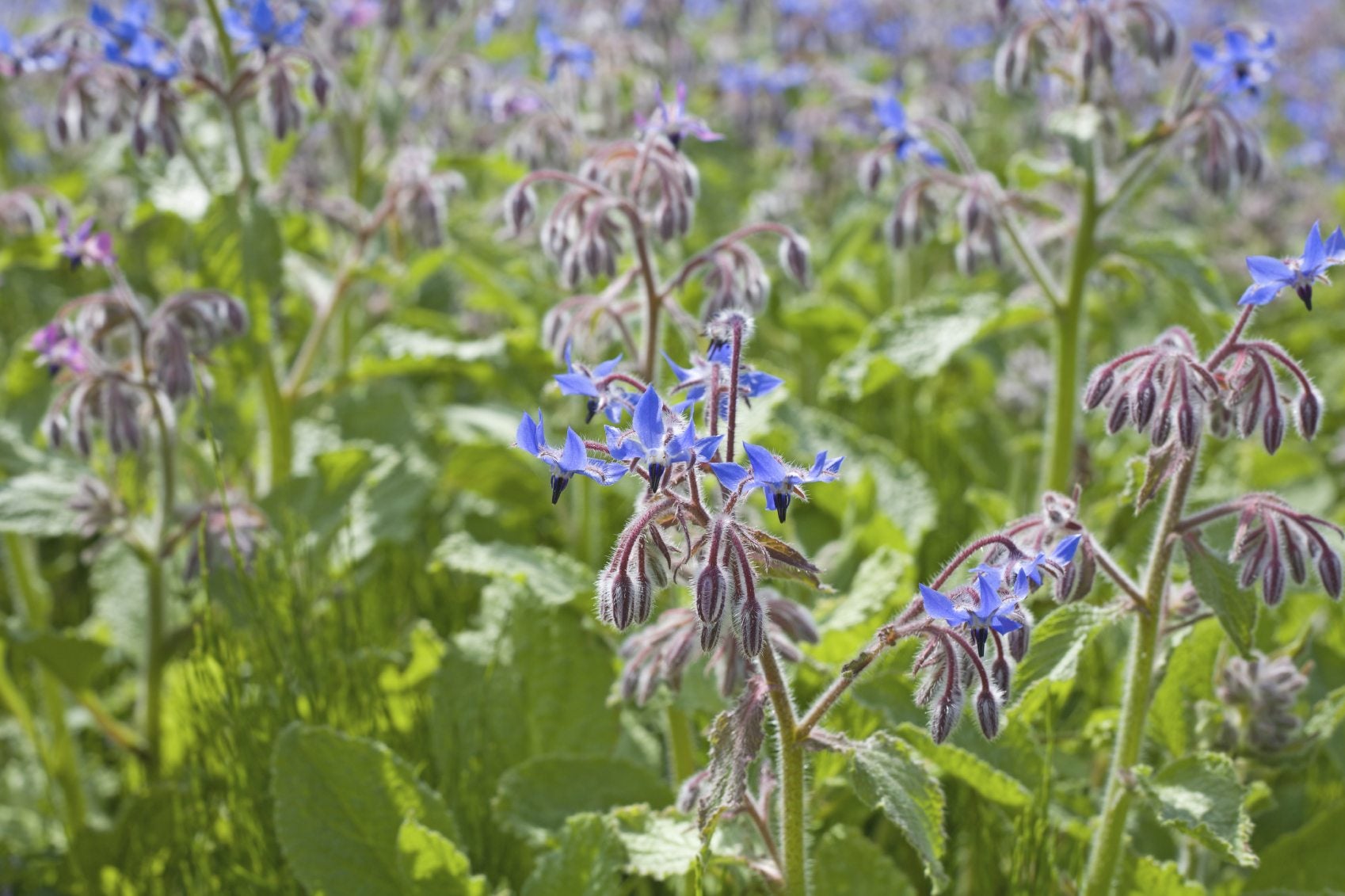Borage Cover Crops – Using Borage As Green Manure


You don't need many excuses to grow borage. With its brilliant, blue, starry flowers and charismatic, fuzzy stems, borage is an herb with tons of garden appeal. This plant has a rich history of use as an herbal remedy, but you might also consider borage cover crops to enrich the soil. Using borage as green manure allows the nutrients brought up by the plant's deep taproot to be dispersed into the upper areas of soil when the plant composts. Borage returns high nitrogen to the soil when it is tilled back in. The result is healthy soil, rich in nutrients and deeply aerated earth.
Borage Cover Crops and Fertilizer
Borage is an old-fashioned herb with a history of culinary and medicinal use. Also known as starflower because of its arresting blue flowers, borage is also a great companion plant that's said to improve the flavor of tomatoes. Commercially, borage is grown for its oil content, but in the garden, you can use its leaves soaked in water as a fertilizer, or plant masses of the herb as a living soil enricher. Borage provides a showy display for four to six months and then has a slow nitrogen release when you chop it back into the soil. Planting a borage cover crop affords a period of spectacular beauty as the sea of deep blue blooms decorate the landscape. Once the flowers are spent, you can till in the plants, reducing them to smaller, broken-down pieces that will compost back into the soil. Using borage as green manure has a win-win effect with a season of beauty and a season of giving back to the earth. True, there are higher nitrogen cover crops that release more quickly when returned to the earth, but the colorful abandon of borage cover crops is a delight to behold, and the gradual nitrogen release allows more nitrogen to remain for future crops while it conditions the soil and increases tilth.
How to Use Borage as a Cover Crop
Sow the seeds from March to April into a well-turned bed that has been raked to remove any debris and obstacles. Seeds should be planted at 1/8 inch (2 mm.) under the soil and 6 inches (15 cm.) apart. Keep the seed bed moderately moist until germination. You may need to thin the seedlings to allow the plants to mature. If you are in a hurry, you can till the plants into the soil before they flower or wait to enjoy the blooms and then chop the plants into the soil to release their nutrients slowly. The deep taproots and wide fibrous root zone will break apart problem soils and aerate, increasing water percolation and oxygen. Planting a borage cover crop in late summer will provide green material for nitrogen release but will not provide you with flowers. It is still worthwhile green manure that is easy to plant and grow.
How to Use Borage as Fertilizer
If you just simply like to have a few of the plants around for their beauty, use as a tea, or for the decorative bee attracting flowers, the plants are still useful even in small numbers. These annuals can get 2 to 3 feet (61-91 cm.) tall with numerous secondary branching stems and leaves. Strip leaves and place them in enough water to cover them. Put a lid on the container and let it ferment for two weeks. After the two week period, drain out the solids and you now have an excellent fertilizer. Use borage as fertilizer weekly, diluted with water at 1 part to 10 parts water. The solution can keep for several months. Don't forget to till in your annual borage plants no matter how many there are. Even small numbers of the plants are excellent soil conditioners, the plant equivalent of beauty and brains.
Sign up for the Gardening Know How newsletter today and receive a free copy of our e-book "How to Grow Delicious Tomatoes".

Bonnie Grant is a professional landscaper with a Certification in Urban Gardening. She has been gardening and writing for 15 years. A former professional chef, she has a passion for edible landscaping.